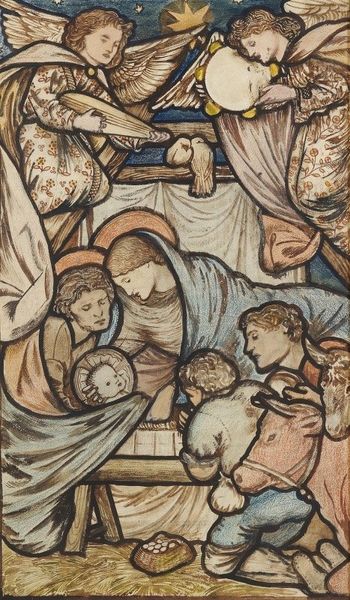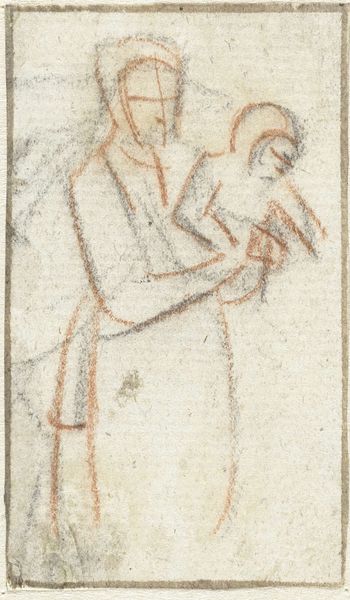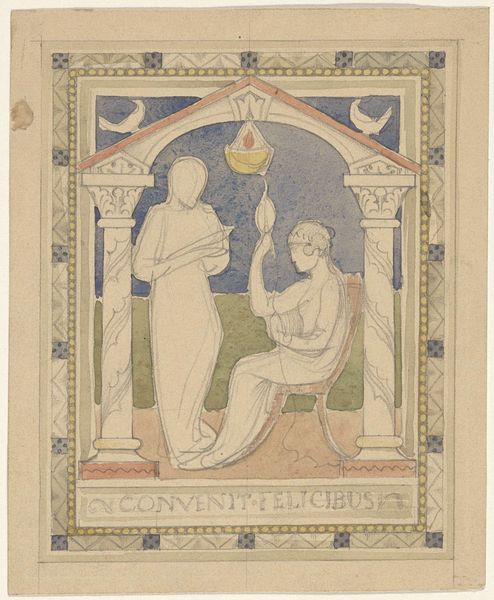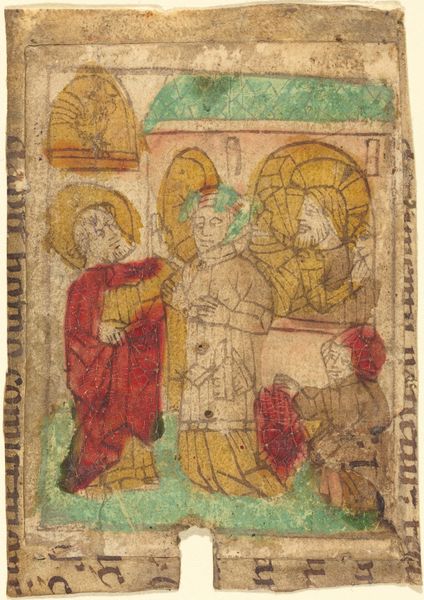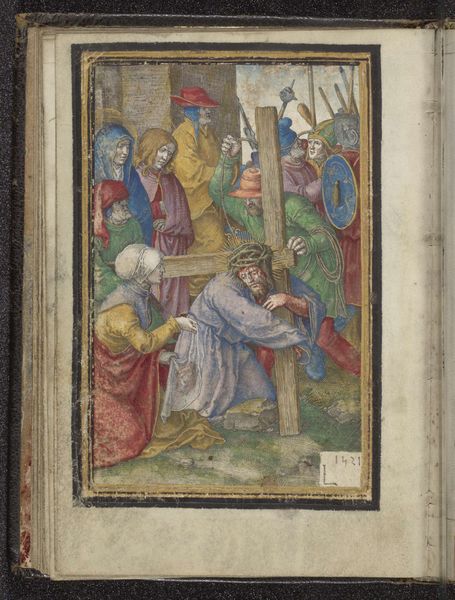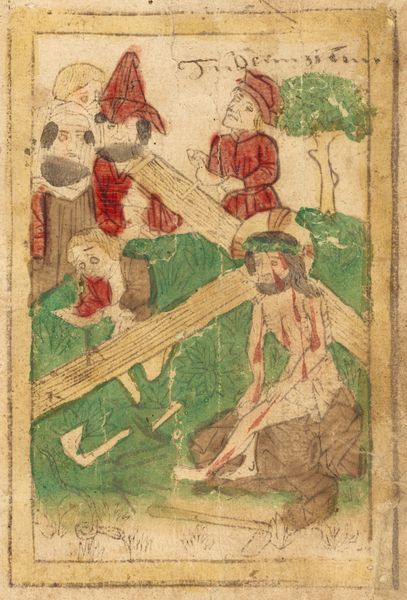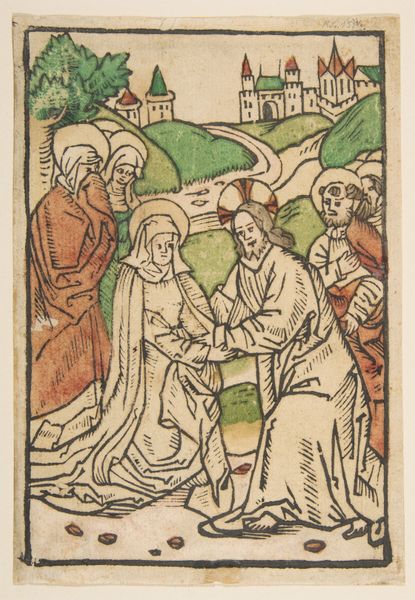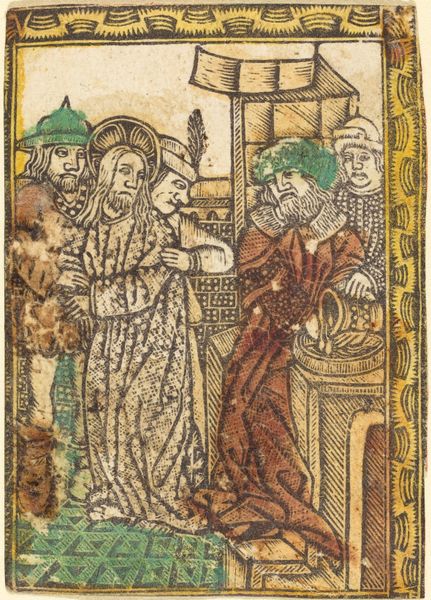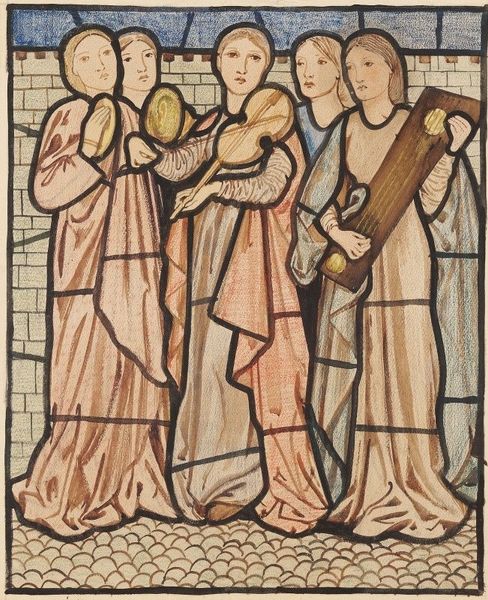
Copyright: Public Domain: Artvee
Richard Nicolaüs Roland Holst made this sketch of a man, woman, and child in a landscape with pencil and watercolor. Roland Holst was a Dutch artist active in the late 19th and early 20th centuries, a time when many artists turned away from traditional realism. This sketch reflects some of those shifts in its simplified forms, muted colors, and idealized subject matter. We can see visual references to earlier art, such as medieval tapestries, in the flattened space and decorative motifs. This suggests a longing for a simpler, more harmonious past, a sentiment common in the Netherlands at the time, which was undergoing rapid industrialization and social change. Holst had strong socialist views. He created art for the worker's movement, in which art played a role in shaping social values. Holst later moved away from those politics, and this drawing is more dreamlike than didactic. But to understand art like this, we always need to look at the social conditions that shape artistic production. We might ask, for example, how the institutions of art and the market influenced the artist's choices.
Comments
No comments
Be the first to comment and join the conversation on the ultimate creative platform.
